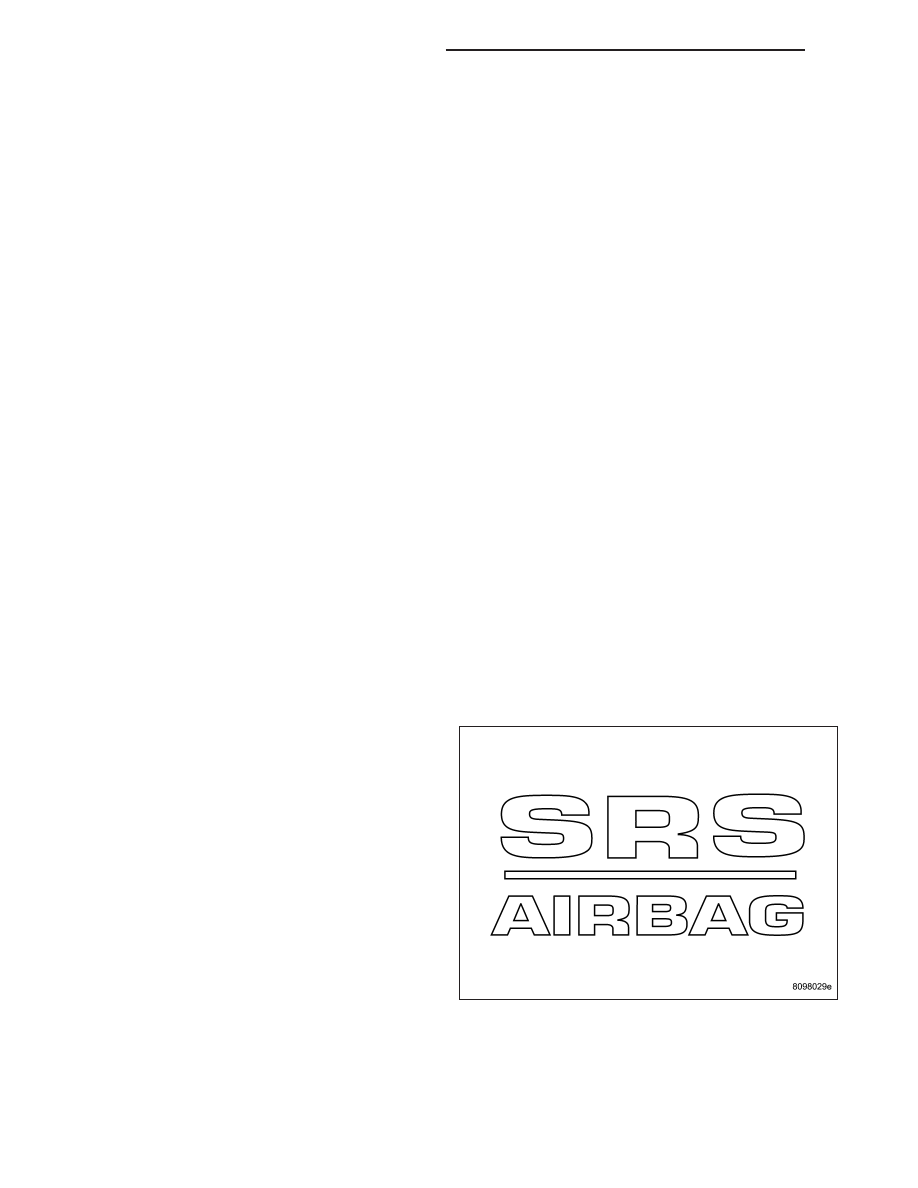Jeep Liberty KJ. Manual - part 233

RESTRAINTS - SERVICE INFORMATION
DESCRIPTION
An occupant restraint system is standard factory-installed safety equipment on this model. Available occupant
restraints for this model include both active and passive types. Active restraints are those which require the vehicle
occupants to take some action to employ, such as fastening a seat belt; while passive restraints require no action
by the vehicle occupants to be employed.
ACTIVE RESTRAINTS
The active restraints for this model include:
•
Front Seat Belts - Both front seating positions are equipped with three-point seat belt systems employing
lower B-pillar mounted inertia latch-type emergency locking retractors, height-adjustable upper B-pillar mounted
turning loops, a traveling lower seat belt anchor secured to the outboard side of the seat frame, and a traveling
end-release seat belt buckle secured to the inboard side of the seat frame. The driver side front seat belt
buckle includes an integral Hall-effect seat belt switch that detects whether the driver side front seat belt has
been fastened.
•
Rear Seat Belts - All three rear seating positions are equipped with three-point seat belt systems. The out-
board seating position belts employ lower C-pillar mounted inertia latch-type emergency locking retractors,
fixed position upper C-pillar mounted turning loops, self-cinching latch plates for compatibility with child seats,
and fixed lower seat belt anchors secured to the floor panel. The rear seat center seating position belt has an
inertia latch-type emergency locking retractor that is integral to the rear seat back panel, and a cable from the
seat back latch locks the center belt retractor spool unless the seat back is fully latched. The rear seat center
seating position belt lower anchor is secured to the floor panel. All three rear seat belts have fixed end-release
seat belt buckles secured to the floor panel, a single buckle unit on the right side and a double buckle unit on
the left side.
•
Child Restraint Anchors - All vehicles are equipped with three, fixed-position, child seat upper tether anchors
for the rear seat. Two anchors are integral to the back of the right rear seat back panel, and one is integral to
the left rear seat back panel. Two lower anchors are also provided for each outboard rear seating position.
These lower anchors are accessed from the front of the rear seat where the seat back meets the seat cushion.
Two lower anchors are integral to the right rear seat back panel, and two are integral to the left rear seat back
panel.
PASSIVE RESTRAINTS
The passive restraints available for this model include
the following:
8O - 238
RESTRAINTS - SERVICE INFORMATION
KJ